Clean drinking water is everyone’s right, but most of the planet’s water resources are polluted. According to the World Health Organization, drinking polluted water causes 485,000 diarrheal deaths every year.
That’s why you need to purchase the right water purifier for your health as the contaminants in the water can cause serious illnesses. However, with various types of water purifiers in the market, how to decide which one is best for your health!?
Don’t worry, we will assist you! In this article, we will discuss the most common water contaminants, the different water sources, and how to select a water purifier according to your water source.
Common Contaminants Of Water
The two most common contaminants in water that make it unhealthy for drinking are:
1. TDS (Total Dissolved Solids)
TDS are the minerals, metals, salts and, ions, etc., that get dissolved in water, making it unfit for drinking. As water flows through various surfaces, these particles get absorbed into it. TDS in water can come from minerals in chemicals used in water purification or from fertilizers or chemicals used in agriculture, etc. Some examples of TDS are:
- Lead
- Arsenic
- Aluminum
- Fluoride
- Chlorides
- Sulfates
- Sodium
- Nitrates
- Copper, etc.
Both too high to too low TDS levels in water can be harmful to your health in the long run. That’s why WHO has set a limit on the TDS levels in the water. It states that TDS level:
- Less than 300 mg/L is ideal.
- Between 300-600, mg/L is good.
- 600-900 mg/L is fair.
- 900-1200 mg/L is poor.
- Above 1200 mg/L is unacceptable.
2. Bacteria And Viruses
Most of the water resources on this planet are home to many bacteria and viruses. Among them, E.Coli and Legionella Pneumophilia, etc., can cause serious damage to the health and in some cases, even lead to death.
How To Select Best Water Purifier For Home According To Your Water Source?
Now that you have an idea about the common contaminants of water, let’s assist you in selecting a purifier according to your water source. The common sources of water are: water supplied through municipal corporations, bore wells, rivers, and lakes and, harvested rainwater, etc.
1. Municipal Corporation
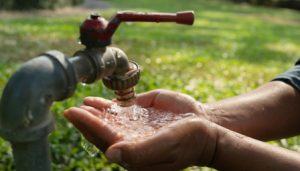
If the municipal corporation supplies water to your area, then it is most likely treated with chlorine. Drinking water with high levels of chlorine doses can induce many ailments in the long run.
Some of the health concerns linked with drinking chlorinated water are:
- Respiratory issues such as wheezing, shortness of breath, and asthma, among others.
- Birth defects in babies.
- Increased risk of bladder cancer
- Irritation of the eyes and skin, etc.
Therefore, we recommend you go for either a RO water purifier or a UV water purifier to reduce the levels of chlorine from your water. The activated carbon filter in a RO purifier can eliminate up to 99% of chlorine from water.
Moreover, a UV water purifier also effectively eliminates chlorine from water. Since chlorine is sensitive to light, UV radiation penetrates the chlorinated compounds and destroys them.
Some examples of the contaminants that can be removed by UV purifiers are:
- Hepatitis A
- Algae
- Cholera
- Norovirus
- Campylobacter
- Salmonella
- Shigella
- E. coli
- Cryptosporidium
- Giardia
2. Ground Water Or Borewell
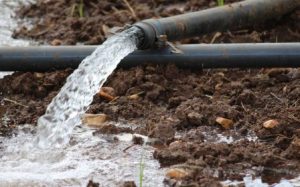
If your water source is either groundwater or borewell, then its TDS level may be high. Usually, TDS in groundwater ranges from 200 to 500ppm whereas in boreal well water it is above 500ppm. These high levels of TDS can be hazardous to your health. Therefore, we recommend you to go for a RO (Reverse Osmosis) water purifier. It works best for water with TDS levels above 500ppm.
The water in reverse osmosis filter systems is passed by high pressure through a semi-permeable membrane. The size of the diameter of its pores is very small (0.0001 microns). As a result, only the water molecules can pass through this membrane and 90% of the impurities get removed. Therefore, RO is very effective in purifying even the most contaminated water.
Also, groundwater is often smelly and contains numerous bacteria and viruses. In this case, an RO purifier won’t be enough to disinfect the water and you would require a RO+UV purifier. While the UV lamp in such a water purifier will effectively kill the harmful bacteria, its RO technology will enhance the color and smell of the groundwater/borewell water and make it fit for drinking.
Lake/River

If the source of your water is a river or lake, then it likely has a low TDS level (less than 200ppm). However, this does not mean that you will not need a water purifier as bacteria, dirt, and clay particles may still be present in your water.
In this situation, a UF water purifier can be your perfect solution! The pore size of its membrane varies 0.005-0.1 microns. As a result, it can trap pathogens, clay particles, and dust from the water and purify it for drinking.
Harvested Rainwater
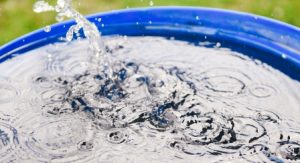
Rainwater can be either harvested on rooftops catchments or stored in reservoirs. If your water supply comes from harvested rainwater, it might contain impurities like mud and sand. However, you still need to purify it since not all rainwater is fit for drinking. The quality of rainwater depends on the cleanliness of catchments or tanks where it is stored. Dust, clay particles and bird droppings, etc., can accumulate in the rooftop catchments or tanks, making it unfit for drinking.
According to a study, drinking contaminated rainwater can cause nausea, vomiting, and diarrhea. Therefore, we recommend you go for a simple, gravity-based purifier to treat rainwater. Gravity-based purifiers don’t need electricity to function. Instead, they use gravity to push the water through a membrane for filtration.
These types of water purifiers are only suitable for areas where the TDS level is low and water is not highly contaminated with bacteria and viruses. That’s why a gravity-based purifier will be your go-to solution to purify rainwater.
Tips To Maintain Your Water Purifier
Water purifiers, without a doubt, eliminate all contaminants from water and protect you from a wide range of water-borne ailments. However, you must clean them regularly to make sure there are no build-ups of sediments, dirt, and bacteria. The following are some tips to maintain your water purifier:
Change Your Water Filter
We recommend you change the filter of your water purifier regularly as dirt and debris can get accumulated in it over time. Therefore, to ensure the smooth functioning of your purifier, change your filter depending on the quality of water it filters.
Get It Serviced

Having your water purifier serviced regularly by experts guarantees that it is always performing at its best. Most water purifiers require maintenance every 6 to 12 months. If the filter is used for more than 12 months, it may become clogged and stop working correctly.
Pay Attention To Drips And Leakages
If you notice a leak in your water purifier, have it fixed right away since dirt and other contaminants might seep into your filter. As a result, make sure you take all necessary steps to stop the leak.
Replace The Membrane
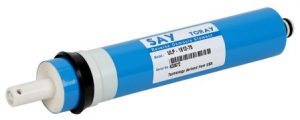
If you have a RO or UF filter, you need to replace its membrane from time to time as it absorbs a lot of dissolved impurities as water is passed through it. This can lead to clogging and make your water taste foul.
FAQs
1. Is water purified in a UV filter harmful?
There’s is a common misconception that water purified in a UV filter is harmful to health. However, this is not the case because the UV used by the UV water purifier system doesn’t remain in the water once purified. Moreover, the UV lamp is surrounded by glass, which prevents direct contact between the UV bulb and the water.
2. How long do UV lamps last?
The UV lamps in UV water purifiers need to be replaced at least once a year. Otherwise, they won’t be effective in killing bacteria and viruses.
3. How often do I need to clean my gravity water purifier?
A gravity water filter is easy to maintain. You just need to replace its filter once or twice each year, depending on the quality of water as well as the manufacturer’s instructions.
Conclusion
By now, we hope you know how to select the right water purifier for your health. With the increasing amount of water pollution, water purifiers have become more a necessity than a luxury.
However, there is no one-size-fits-all solution when it comes to water purifiers. Therefore, it is crucial to understand the source of your water before purchasing a water purifier.
If you have any other questions, please type them comment section below. We will be happy to help you!

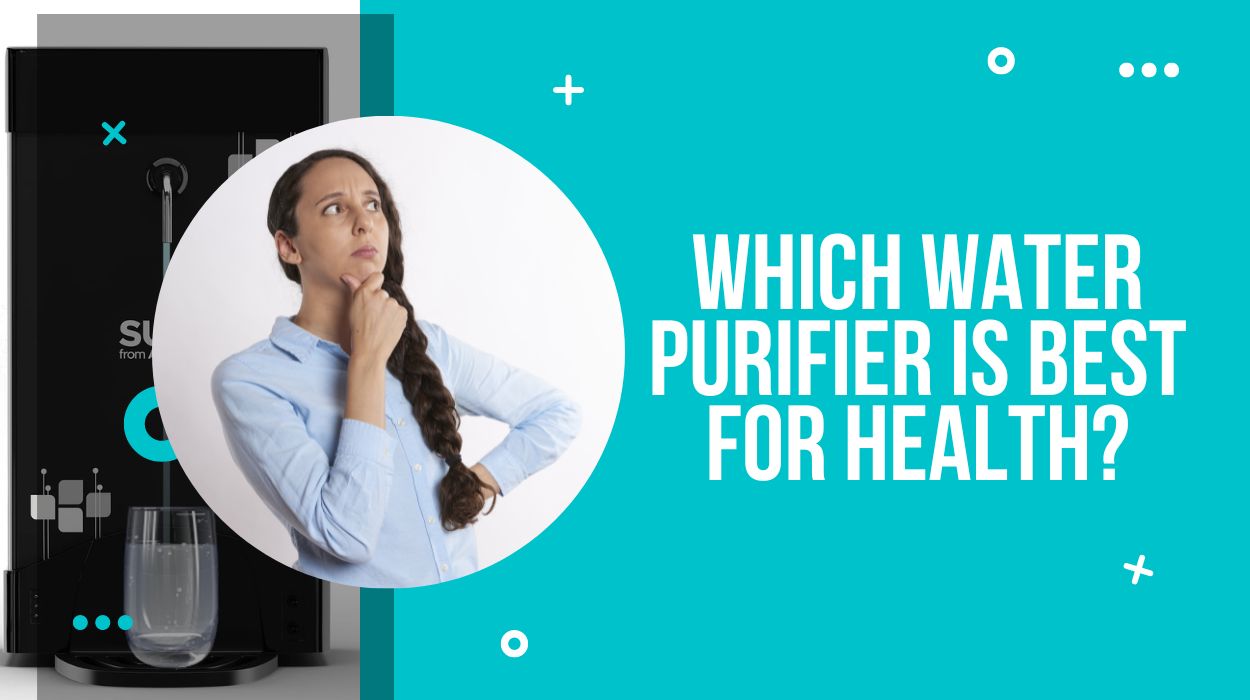

I have a new drilled well down 240ft. What type of RO system would you recommend? Concerned about the mineral loss
RO systems use a porous membrane to remove impurities from water and can handle well water with high TDS, iron, bacteria, viruses, and other contaminants. So I recommend using any good brand. Here you can find a few recommendations: https://drugresearch.in/best-water-purifier-in-india/